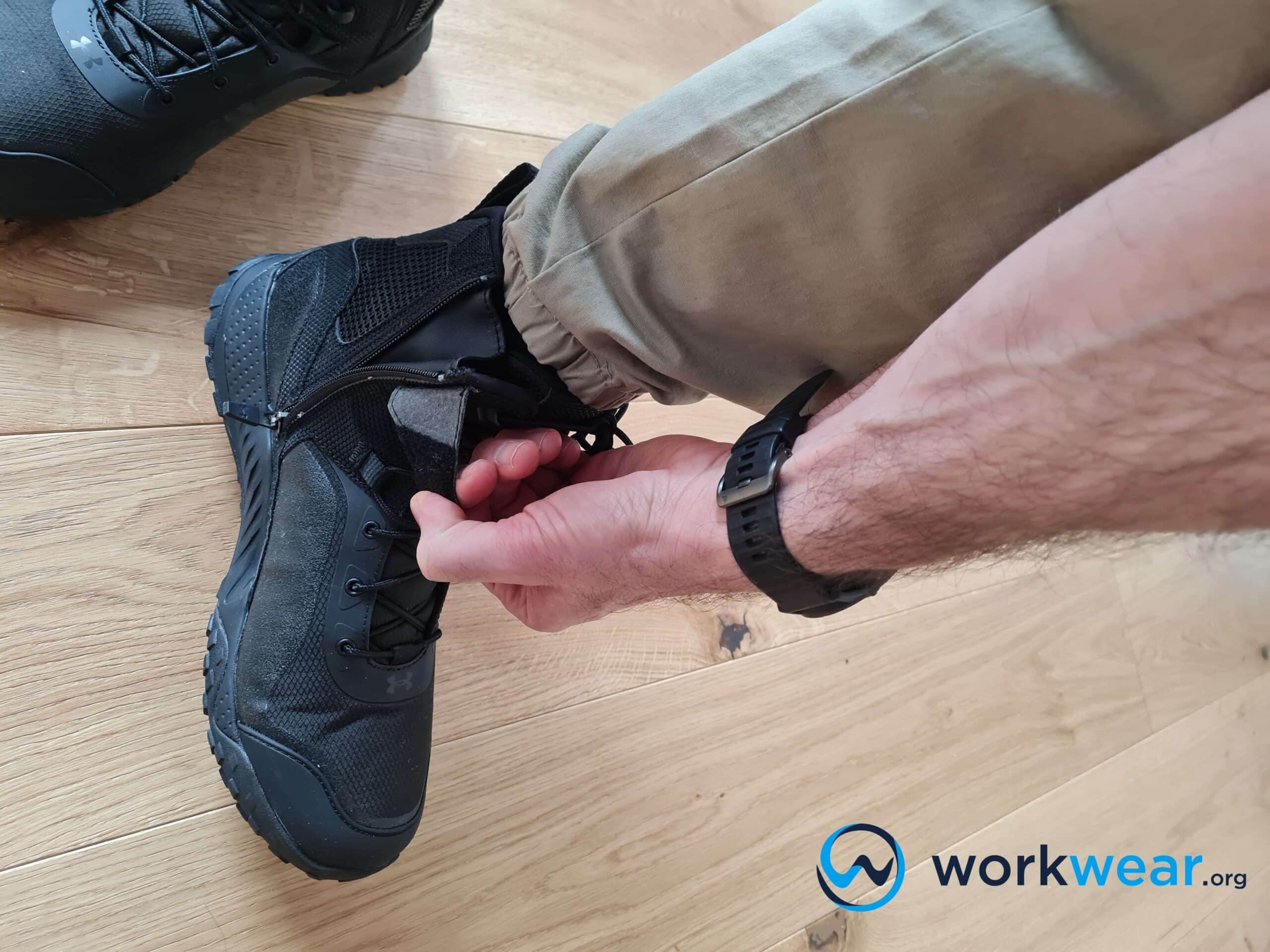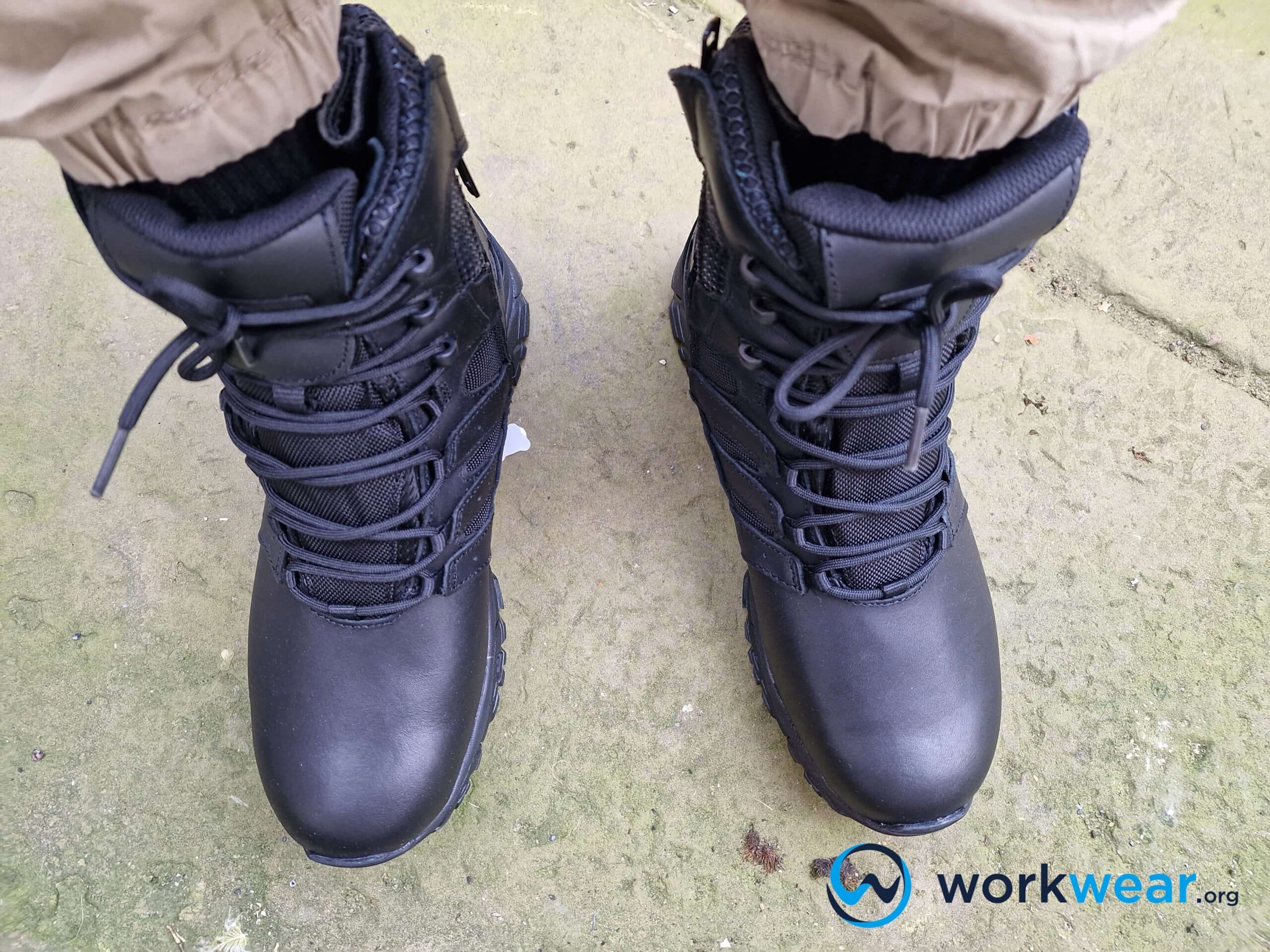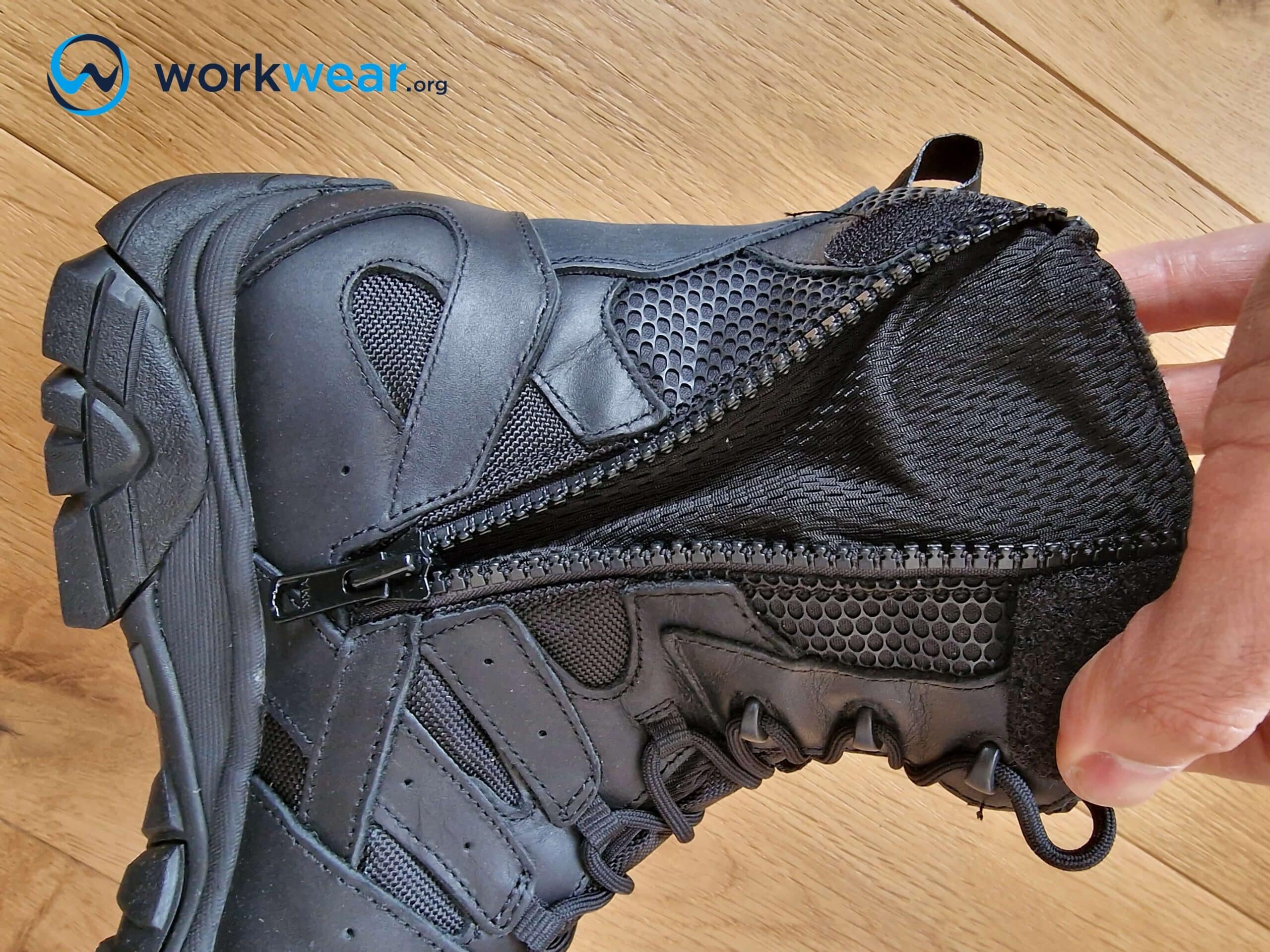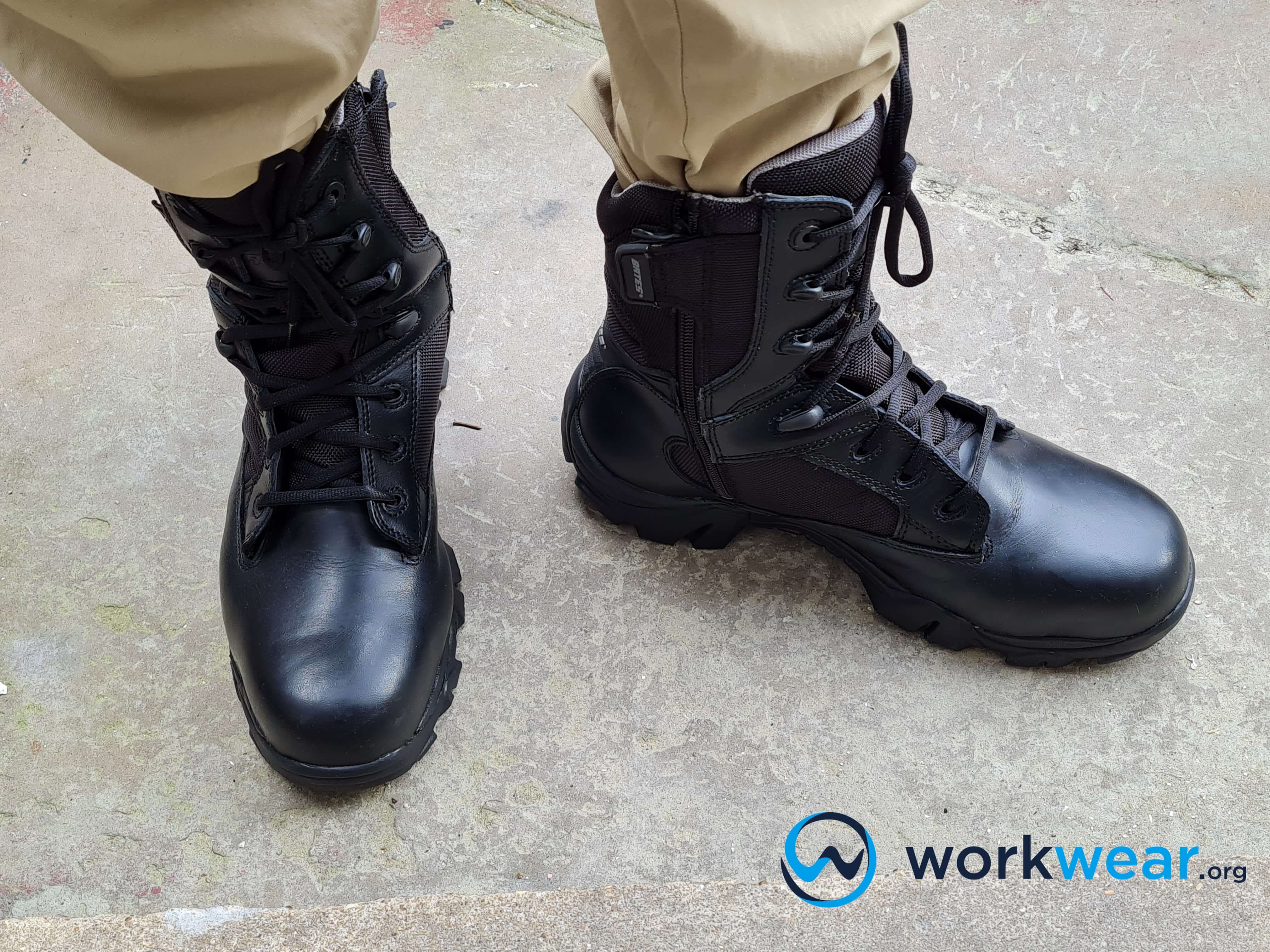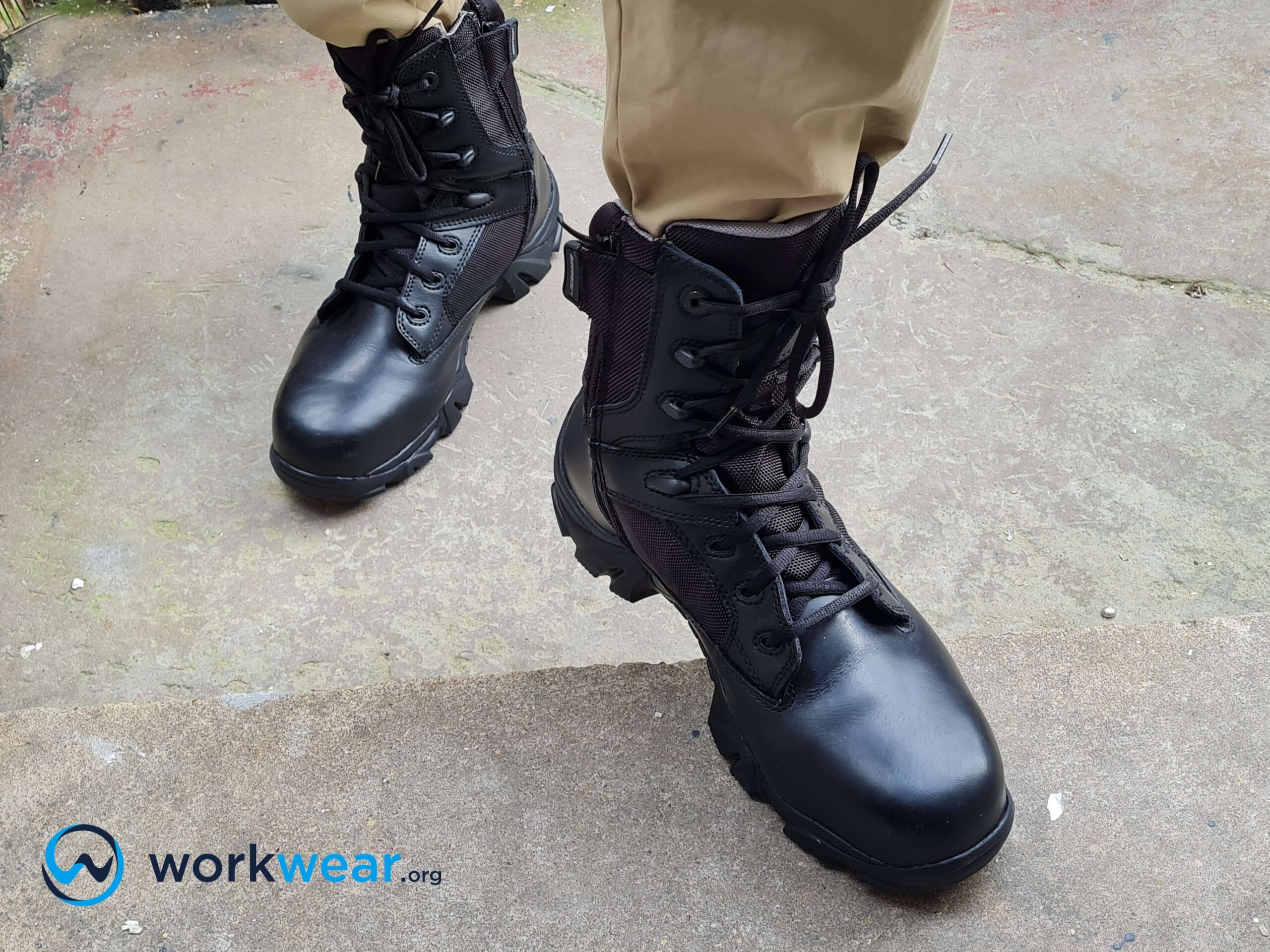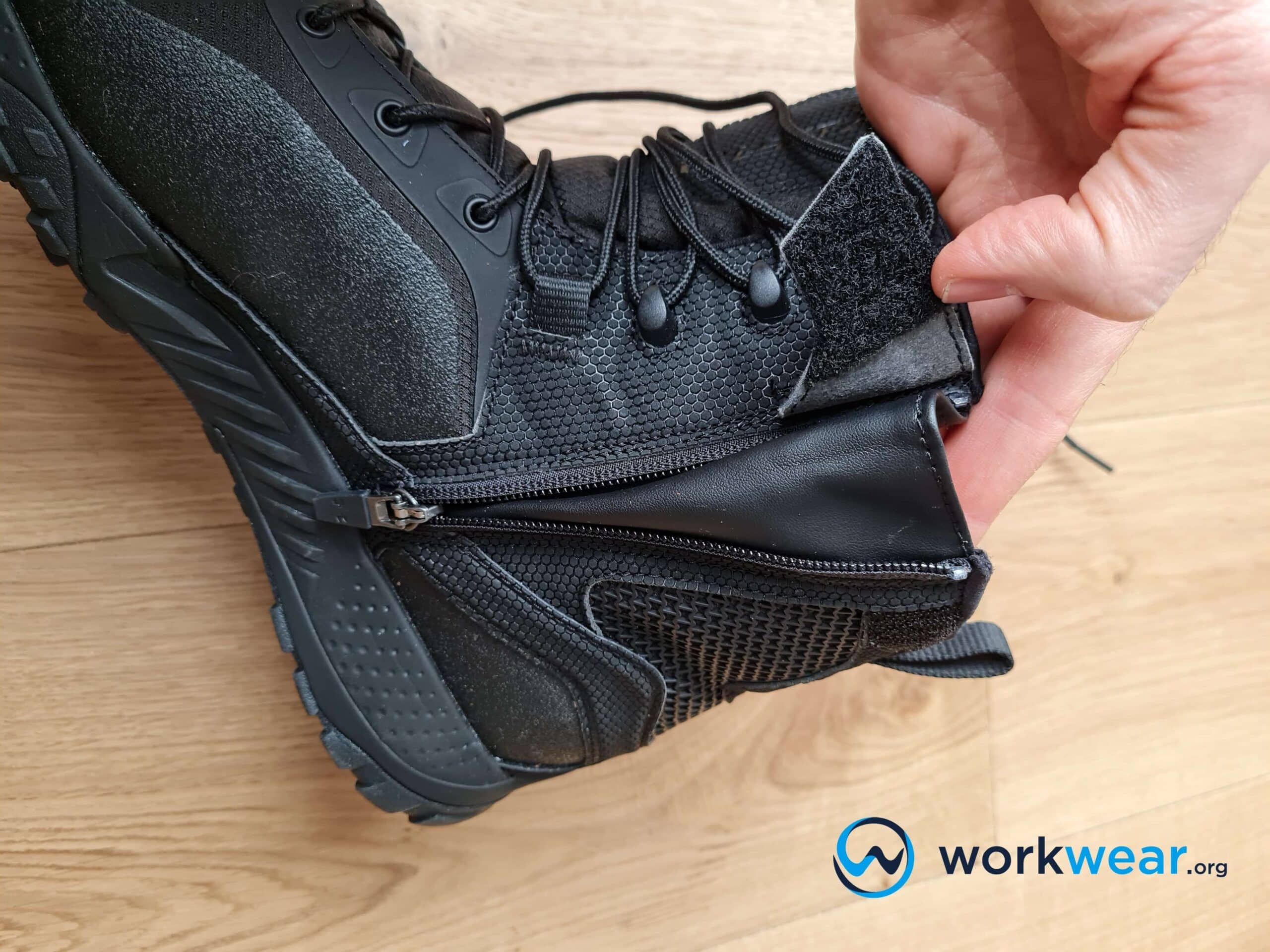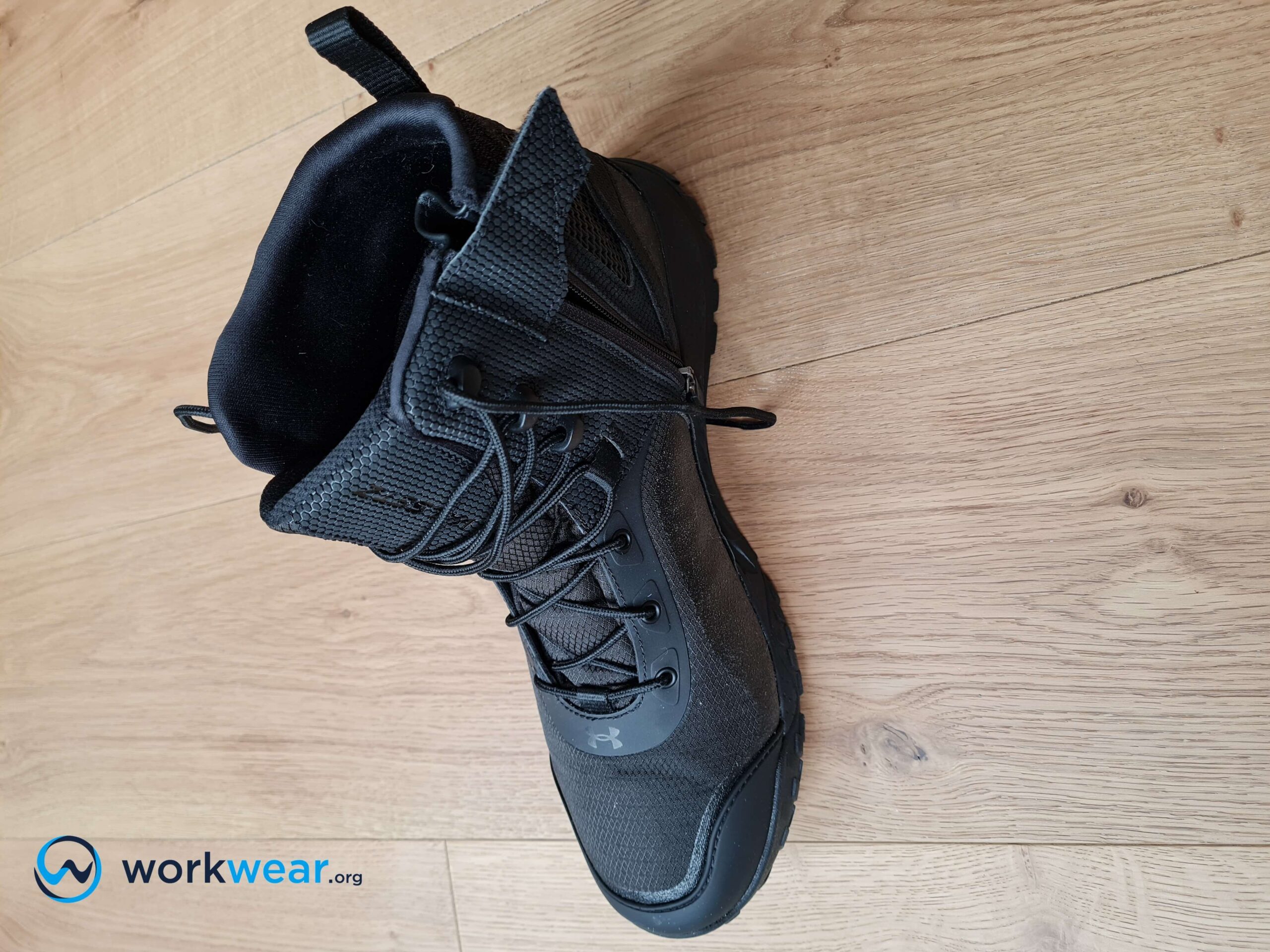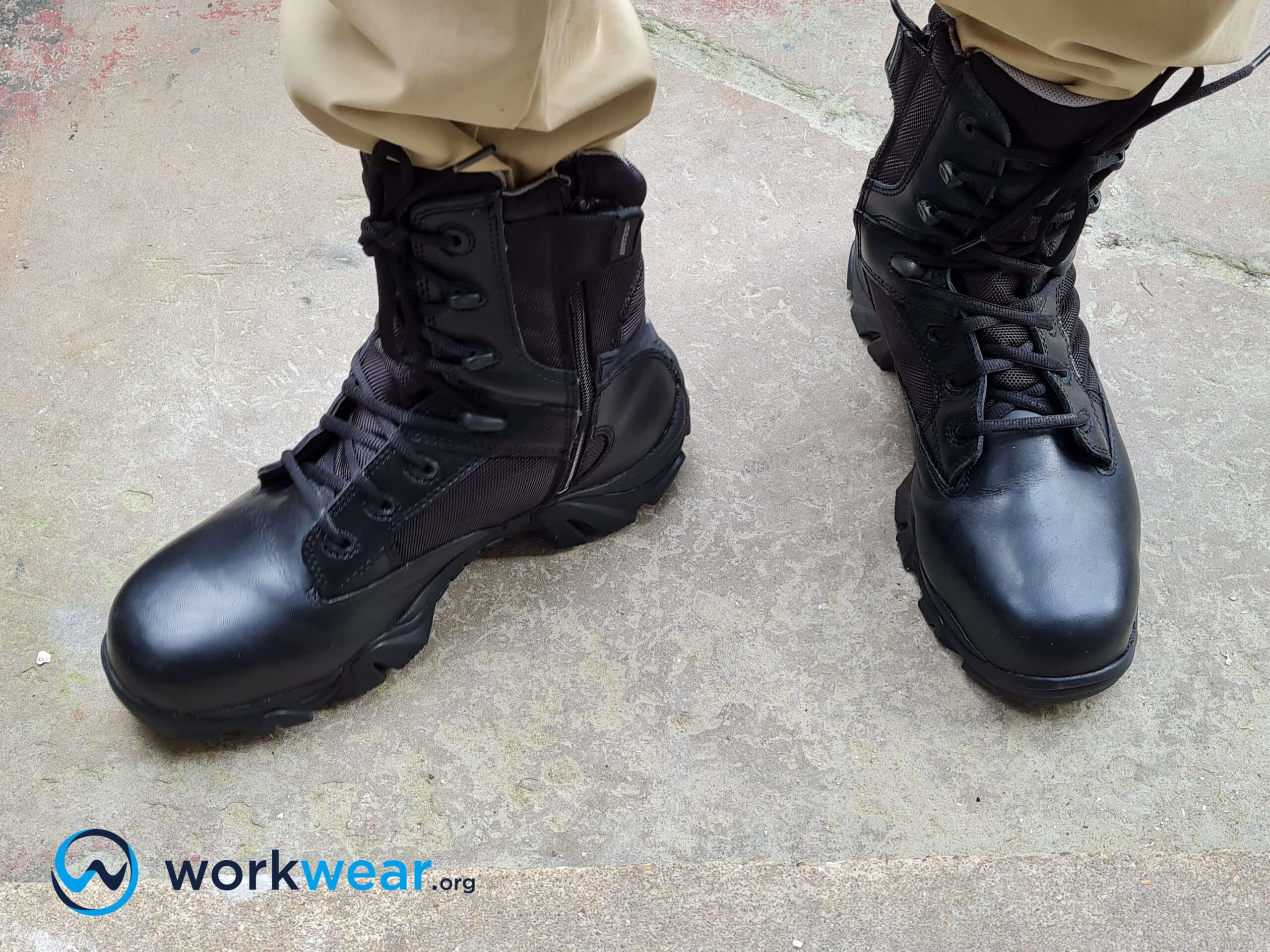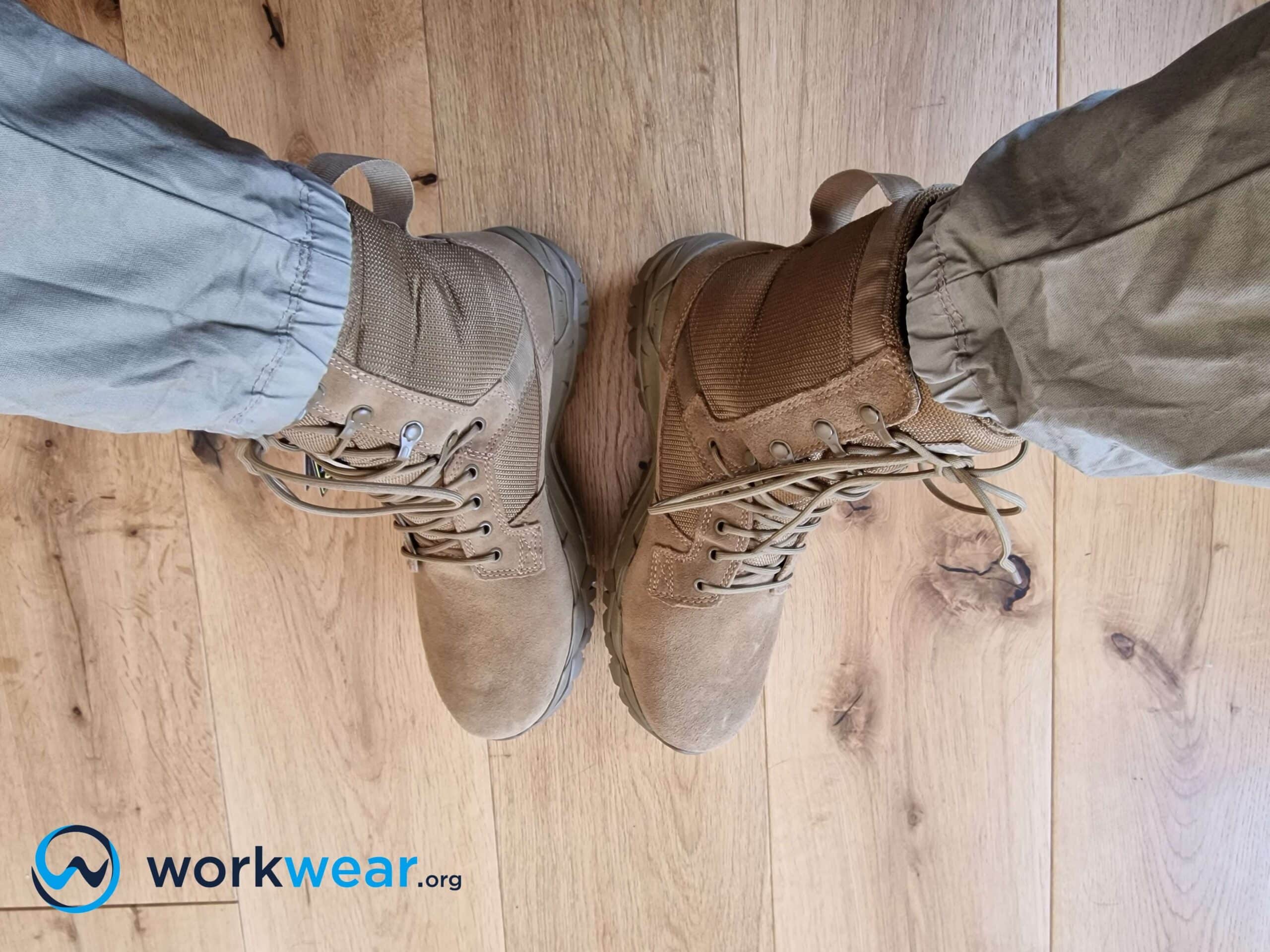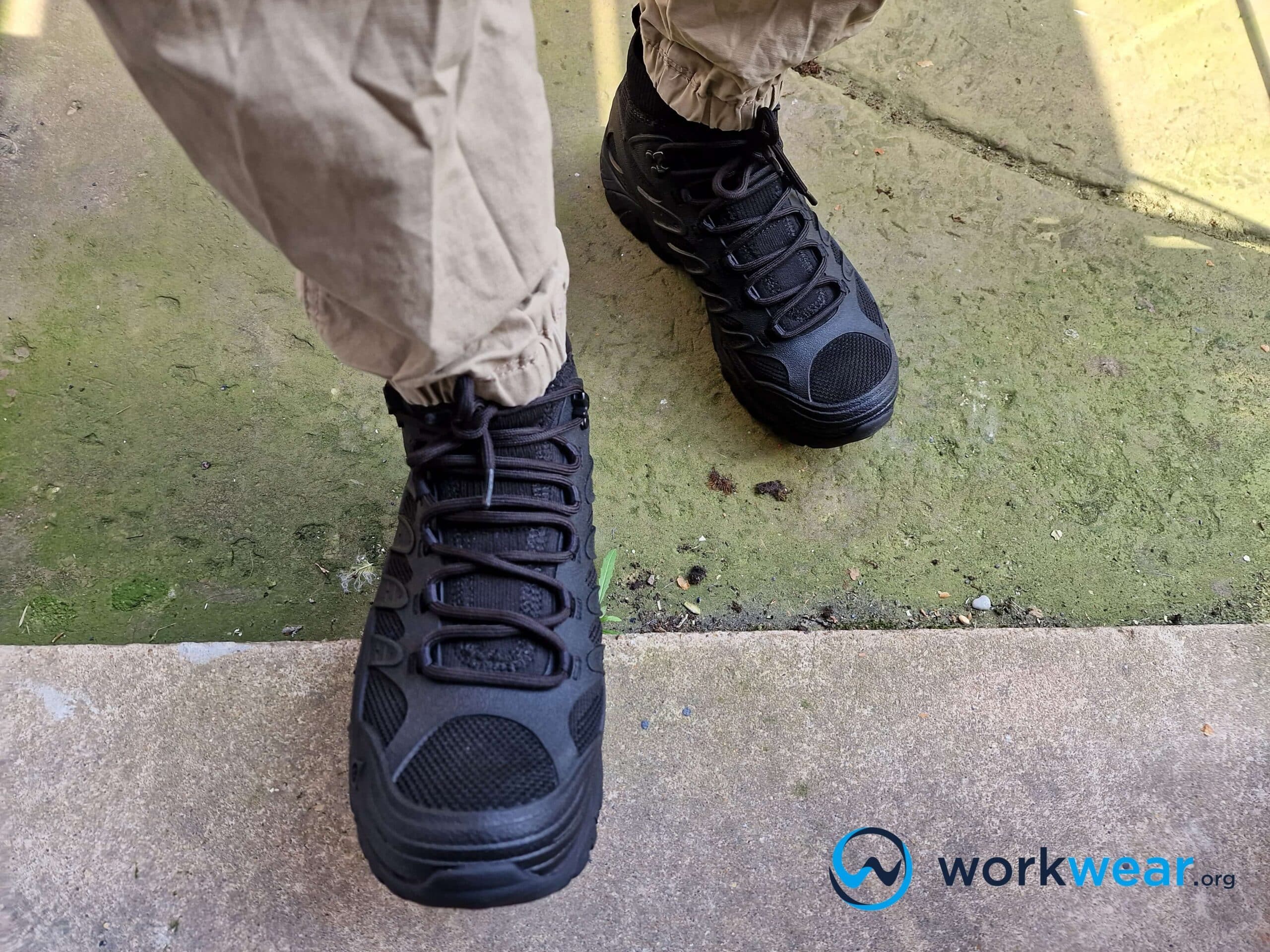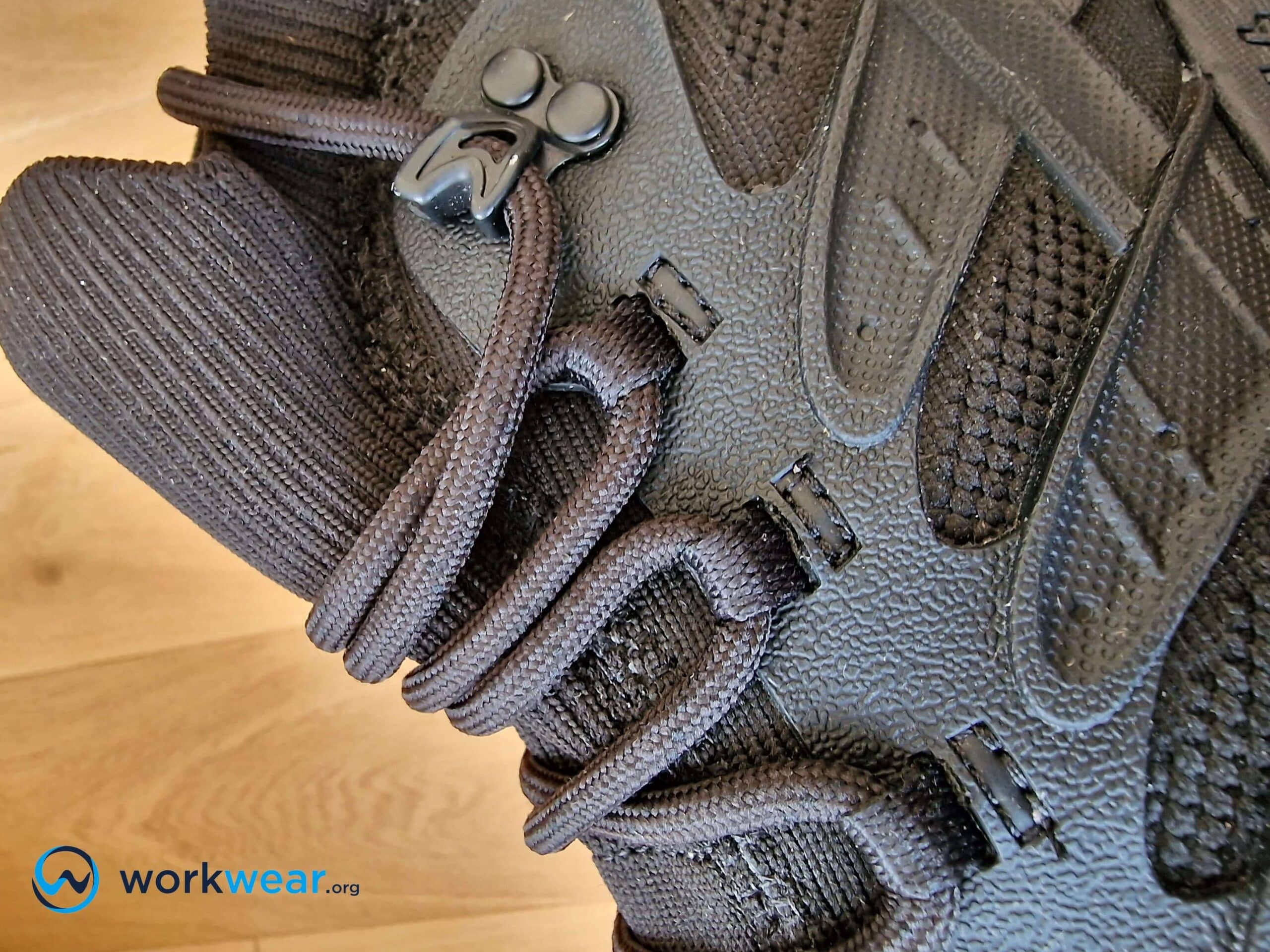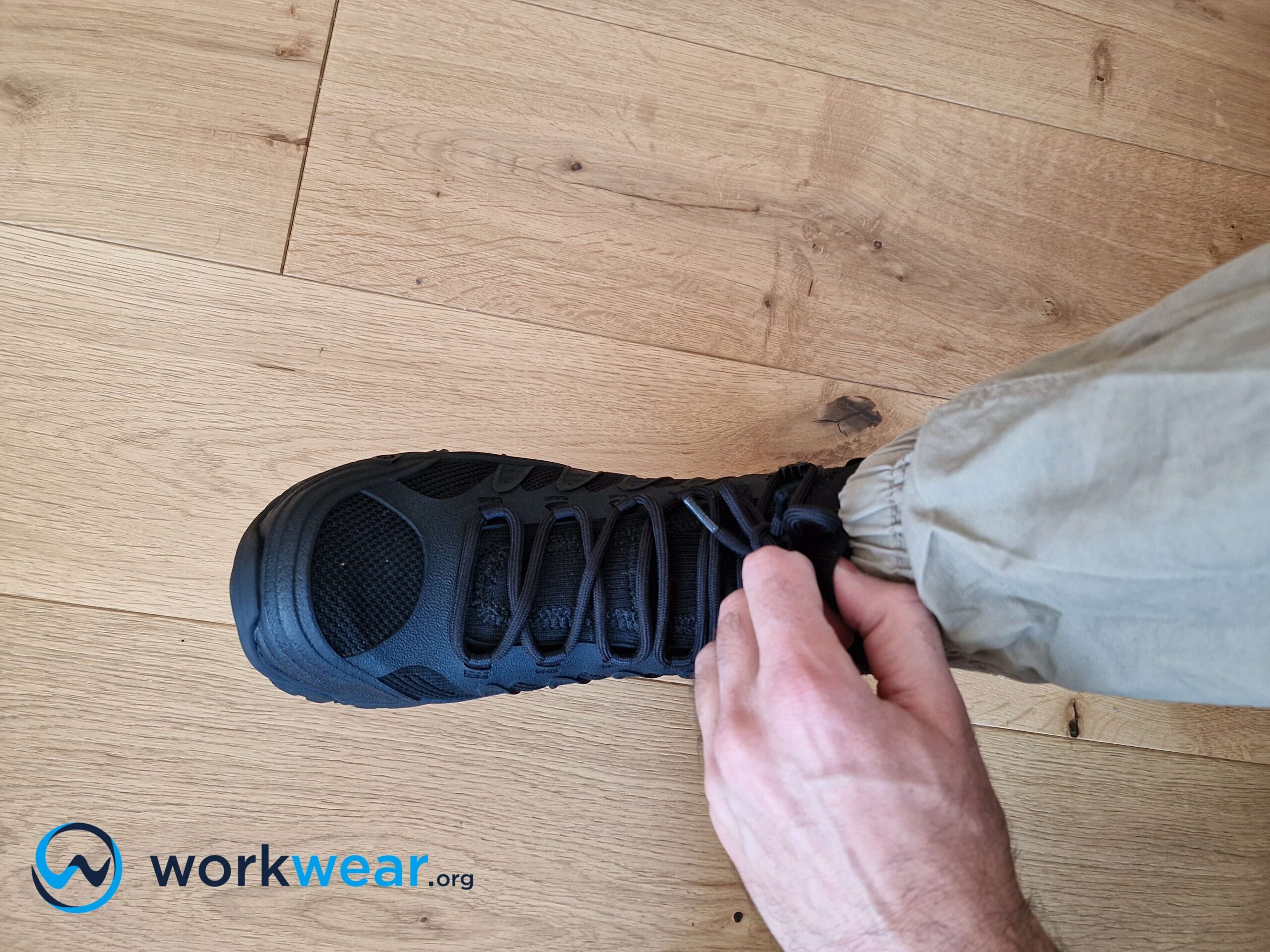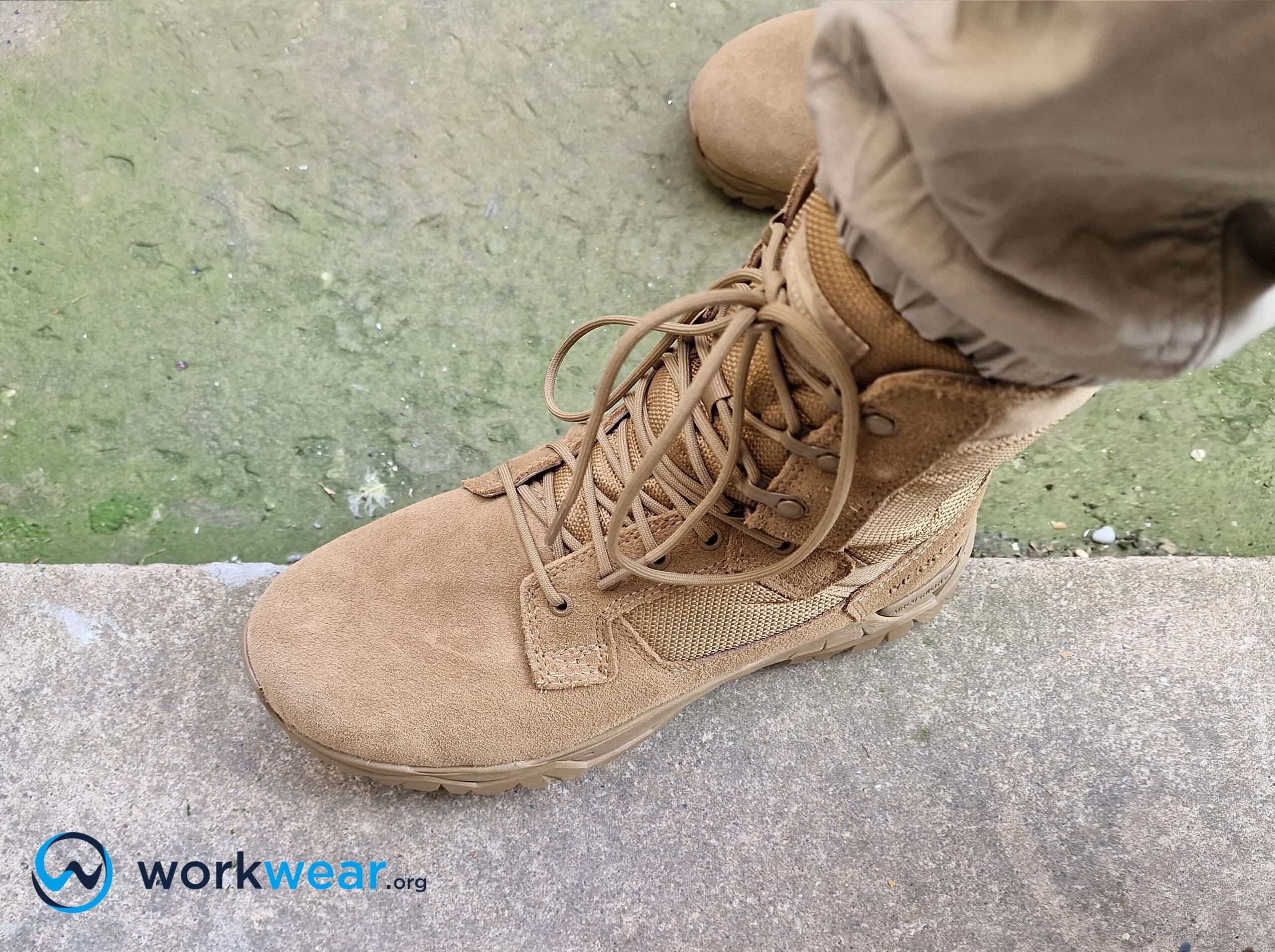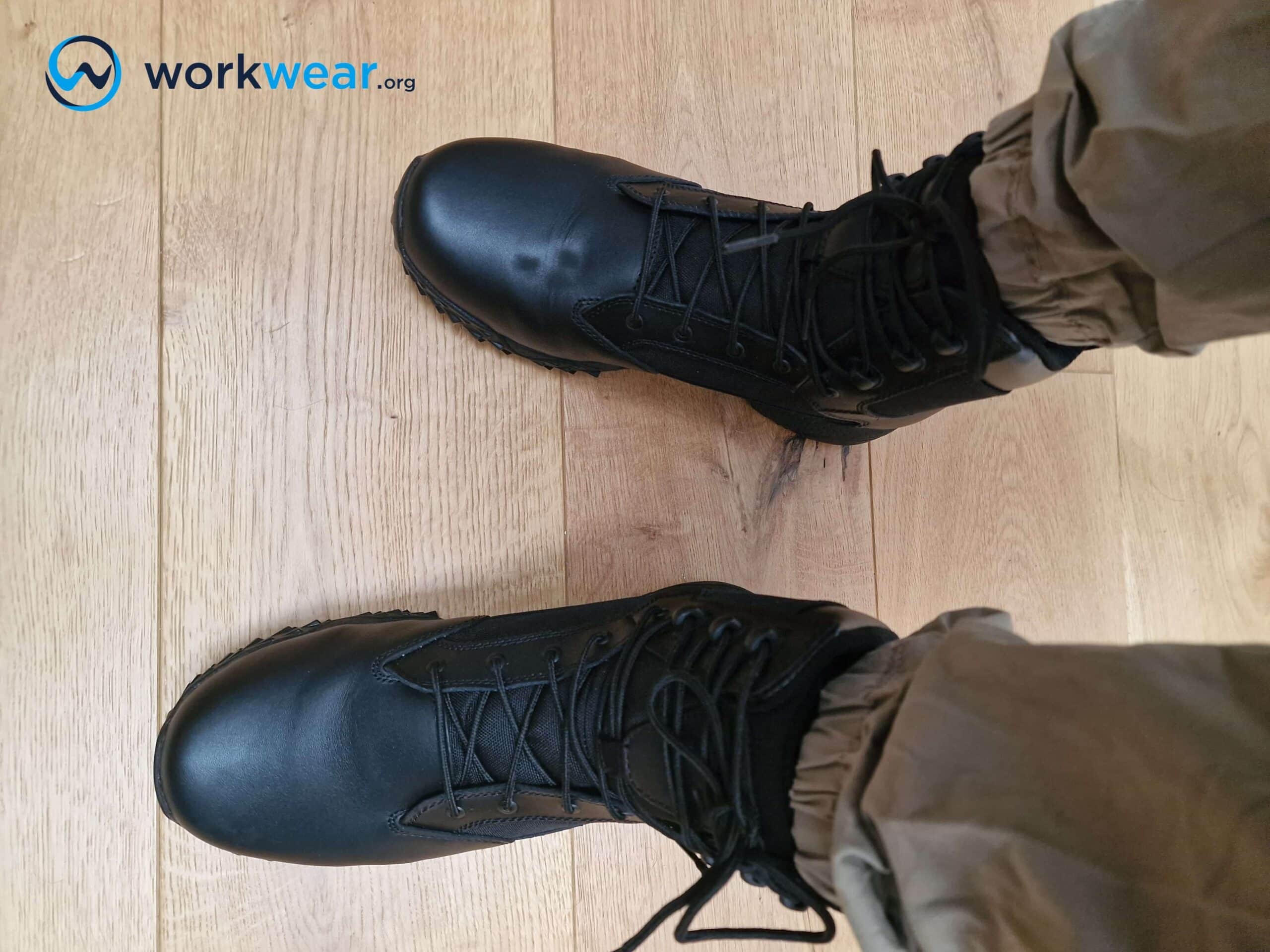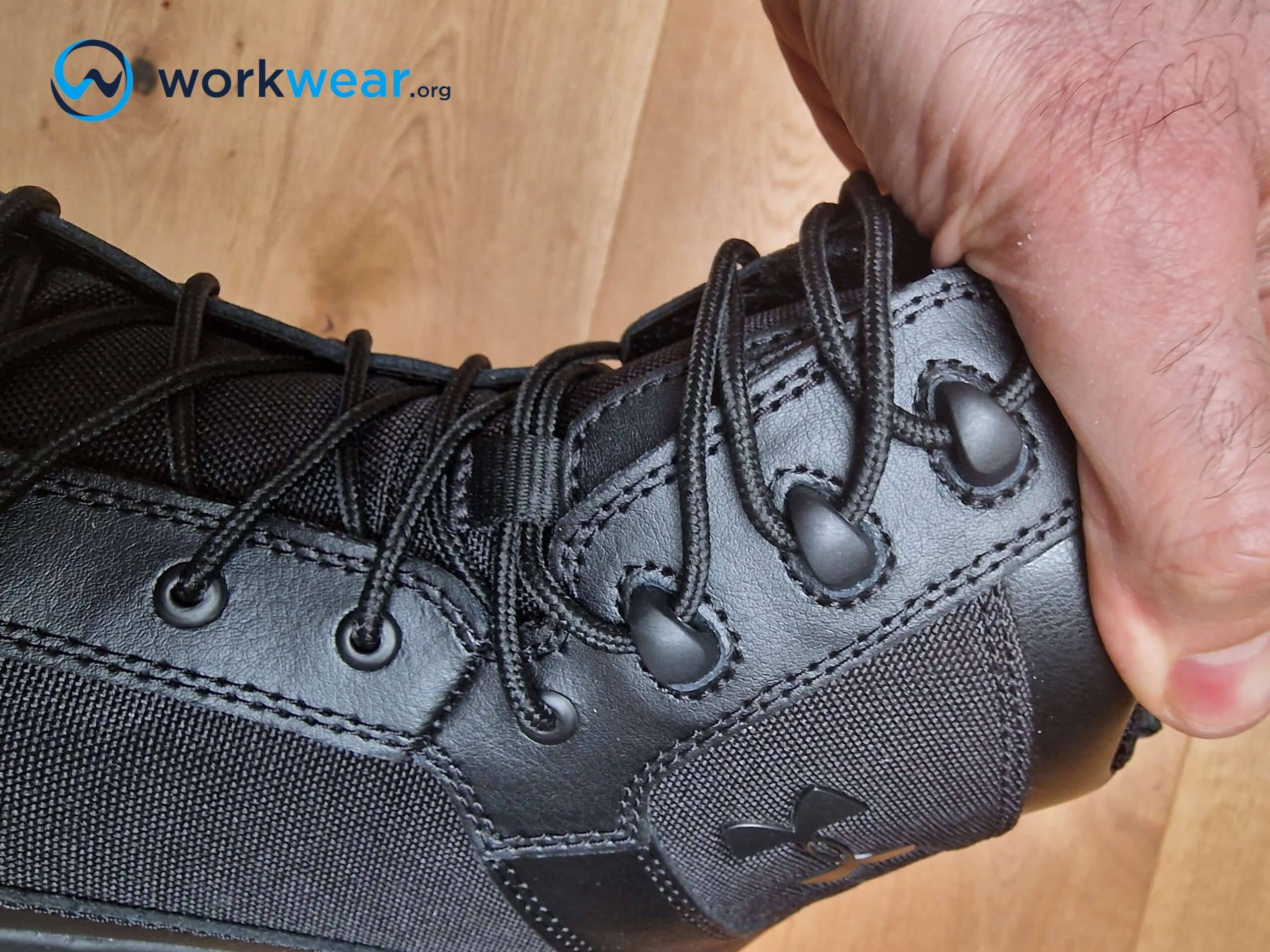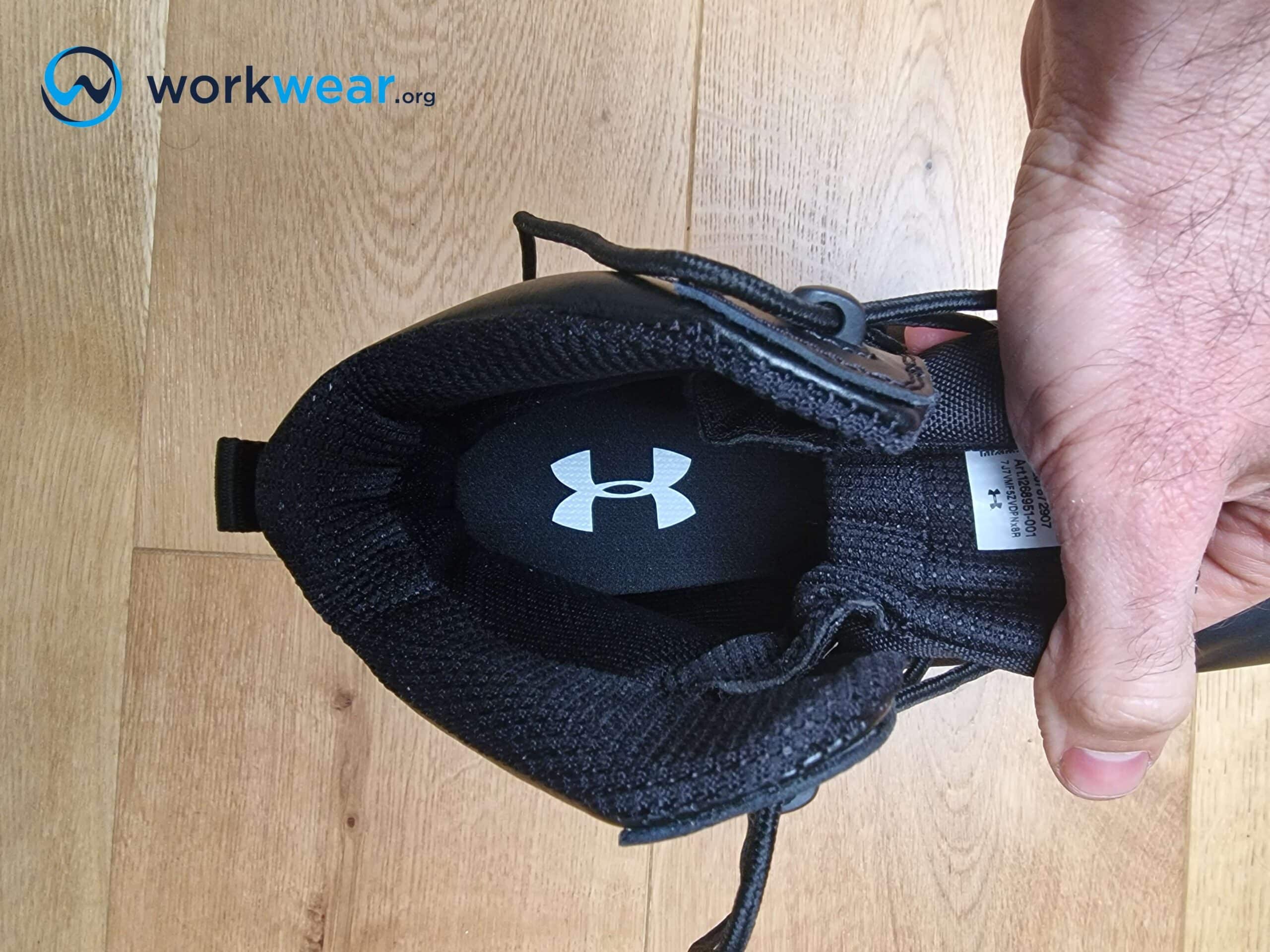Tactical Boots – To Zip or Not to Zip?

When it comes to tactical boots, the ultimate dilemma that most people have is whether to choose a pair of boots with a side zipper, or one without. They may not seem like major additions, but zippers significantly impact the performance of tactical boots.
Zippers certainly make boot-wearing more convenient, but they can also come with their own set of issues. In this article, we compare tactical boots with side-zippers against boots with just laces.
Tactical Boots with Zipper
Tactical boots with zippers are quicker to put on and off.
The zippers can be used alone when getting the boot on and off, so there’s no need to lace up with every use.
The zippers can be placed on the side or at the back of the boots, offering a more convenient way of wearing the boots without compromising functionality.
Advantages
Convenient boot-on and removal
The main advantage of side zippers on tactical boots is convenience.
Zippers considerably shorten the time spent putting on and removing boots. They take only a few seconds to zip up or down, compared to a lacing system that can take longer to deal with.
This level of convenience is even more important in the case of tactical boots, especially in critical situations when speedy responses are required.
Tactical boots with zippers are just as quick to remove, making necessary footwear changes throughout the shift much easier.
No need for constant fit adjustments
The fit of tactical boots with zippers doesn’t need to be constantly adjusted.
The lacing system can be fixed beforehand to ensure the most comfortable, stable fit, so you won’t need to fiddle with the laces throughout the day.
The zipper is the only section you’ll need to deal with when you need to put the boot on and off – and you’re sure to have the right fit all the time, even without adjusting the laces, which have already been set to the ideal settings.
It can be unzipped for ventilation
Tactical boots tend to have tall designs that tend to feel too warm before long.
Side or back zippers can be opened or unzipped to let more air in.
Doing so lets the feet breathe better, preventing an overheated feeling or excessive sweating.
Opening the zipper can significantly improve foot comfort when wearing tall boots, especially if worn for long hours in humid or hot environments.
Extends the life of shoelaces
Side or back zippers take the brunt of the heavy work in tactical boots. They’re used when putting on and removing the boots, with the shoelaces already in the ideal setting.
This saves the shoelaces from extensive wear and tear, unlike boots that don’t have zippers where the laces do all the work.
Tactical boots with zippers allow the shoelaces to maintain their high-quality appearance and function much longer since they’re not always moved or used.
Ideal for those with hand mobility issues
Tactical boots with zippers are easier to put on and take off than those that only have lacing systems. The zippers take less effort to pull close and unzip, making them suitable for those with dexterity issues.
Tactical boots with back or side zips are more manageable for people with hand injuries or health concerns affecting the hands (such as arthritis).
Disadvantages
When broken, zippers compromise foot safety and comfort
Tactical boots with broken zippers can compromise the comfort and safety of the feet.
If stuck in the open position, they expose the feet to the elements, debris, and other items in the surrounding area that can potentially cause harm.
Broken zippers can also let the cold air in, making the feet feel frozen in cold conditions.
Damaged zippers are nearly impossible to fix/replace
When side or back zippers on tactical boots are damaged, they’re difficult or almost impossible to replace.
It would take a lot of effort to try and remove the broken zipper from the body of the boot, and doing so can also cause damage to the boot’s structure.
In most cases, broken zippers result in the entire boot being compromised.
Can pinch the skin or damage socks
Sometimes, zippers can pinch the skin.
This can happen when you’re in a hurry to zip up the boots, and the skin accidentally gets caught in the zipper as you pull it closed.
In some cases, the zippers can damage socks if they unintentionally get caught in the fabric when you quickly pull on the zipper to boot on or off.
Liquids can seep in through the zipper
Unless the zipper is designed to be fully waterproof, it can allow liquids to get in.
Wet elements can seep in between the teeth of the zipper, causing the feet to get soaked.
This can be a huge concern when going on duty in bad weather and areas exposed to much moisture.
Tactical Boots without Zipper
Tactical boots can be built with only the conventional lacing system in place.
They’re laced up the normal way without the benefit of having a zipper on the side or at the back.
The lacing system is responsible for securing the foot in a stable position and can be adjusted to achieve a comfortable fit.
Advantages
Easy to customize the boots’ fit
The fit of tactical boots without zippers can be customized without the help of zippers.
The laces can be adjusted to tighten or loosen the boots so they’re comfortable enough to be worn all day.
Any changes to the boots’ fit can be done by undoing and then tying the shoelaces to the preferred tightness, ensuring the feet’s security.
Ankle support can also be personalized by modifying the shoelaces’ settings, which can’t be done with zippers alone.
Complete waterproofing (whenever applicable)
Waterproof tactical boots that don’t have zippers can block wetness much better than those with zippers.
The water resistance typically extends to the lacing system, ensuring that liquids won’t stand a chance of penetrating the boots.
This is not always the case with side-zip tactical boots because wet elements can often seep through the zipper’s teeth, causing the feet to become uncomfortably soaked in wet surroundings.
Shoelaces are easy to replace
If shoelaces are damaged, they can be replaced quickly.
The new laces can be put in and used immediately once the worn pair is removed without changing the boots’ structure.
All you need to do is find a new pair of laces that fit the boots – and have the same quality as the original pair.
This isn’t the case when zippers break apart in tactical boots, which often need to be replaced since the zippers are difficult to fix.
No skin pinching
You don’t have to worry about getting your skin pinched when using tactical boots with no zippers.
The boots can be worn, and their fit is personalized by just using the shoelaces, which don’t come in direct contact with the skin because they’re outside the footwear’s structure.
You can put on and remove the boots without fearing that the zippers can tear painfully into your skin, especially in a hurry.
Better warmth retention
Tactical boots without zippers can trap warmth well.
The lacing system can be fully enclosed to retain the warmth much better.
This is advantageous in cold environments where the feet can feel frozen if cold air is allowed.
Zippers in tactical boots can let the cold, so tactical boots with side-zip designs have weaker warmth retention than those without this extra component.
Disadvantages
It takes more time and effort to tie
Tying shoelaces takes more time and effort than pulling a zipper closed.
The extra time doesn’t seem much, but it can be significant if you’re in a hurry – which can often be the case when you’re on duty.
Taking tactical boots off can take longer when you need to undo the knots and untie the shoelaces first, compared to just pulling the side zipper open to finish the job.
Shoelaces wear out more quickly
The shoelaces of tactical boots with no zippers tend to break apart faster than side-zip tactical boots.
The laces are constantly adjusted to personalize the fit, and whenever the boots are used, their materials fray and get damaged much more quickly.
More prone to overheating
Tactical boots without zippers are better at heat retention. However, this also makes them more prone to overheating.
Without zippers that can be opened to welcome more air, the boots’ interiors can heat up quickly, especially with tall designs used in high-temperature environments.
Comparison table
| Pros | Cons | |
| Tactical Boots with Zipper | · Quicker boot on and off
· No need to constantly adjust the boots’ fit · Can be unzipped to cool down the feet · Prolong the life of shoelaces · Suitable for those with hand mobility issues |
· Damaged zippers compromise foot safety and comfort
· Broken zippers are nearly impossible to fix/replace · Can scratch or pinch the skin or damage socks · Liquids can get in through the zipper |
| Tactical Boots without Zipper | · Boot fit can easily be customized
· Stronger water resistance (whenever applicable) · Shoelaces can easily be replaced · Don’t pinch the skin · Can retain warmth for much longer |
· Takes more time and effort to tie
· Shoelaces wear out more quickly · Ventilation isn’t very good |
Top Brands and Their Tactical Boot Offerings: Zippers vs. Laces
Various brands offer tactical boots with traditional laces or enhanced with zippers. In this section, we’ll examine prominent brands in the market and analyze the distribution of boots with zippers versus those featuring only laces. Our research, which encompasses ten of the largest and most renowned brands, reveals that out of a sample of 300 tactical boots, 39% incorporate side zippers, while the remaining 61% rely solely on traditional lacing systems. The chart below provides a brand-specific breakdown of zippered and non-zippered options.
Personal Testing Experience
Here are the things we observed when we tested two high-performance tactical boots. The Merrell Moab 2 8-Inch Tactical Response Waterproof Boot, which, based on our evaluation, is one of the top tactical work boots, uses waterproof leather and an exclusive lining material to block wet elements effectively. We loved the generously padded interior and reliable arch support that kept our feet comfortable all day. The boot had a secure grip on most surfaces, making walking on tricky ground much safer and more stable. It had a side zipper that made the boot-wearing experience more convenient. However, the zipper felt fragile and didn’t look like it would last long.
On the other hand, the Under Armour Stellar Tactical Boot had a lightweight design that made walking and standing for hours on the field a lot easier. The OrthoLite sock liner offered continuous pressure relief, preventing blisters from forming while cushioning the feet against the impact of walking on hard ground. We liked the water-repellent leather upper that stopped liquid absorption and kept our feet dry. Given its height, this affordable tactical boot didn’t have a side zipper, so we weren’t surprised when it was quite difficult to put on and remove.
Conclusion
In the realm of tactical boots, side zippers provide convenience, while zipperless boots prioritize durability and versatility. The right choice depends on your specific needs. Ask yourself about your primary purpose, weather conditions, need for quick wear, and comfort requirements. Tailor your choice to your unique circumstances, and your boots will serve you well.
FAQ's
- Is it possible to replace the zippers on tactical boots?
- In some cases, yes. However, it would take a lot of effort, and doing so may compromise the appearance and function of the upper when the zipper is removed and sewn back on.
- Can tactical boots with zippers be used with casual wear?
- Yes, tactical boots – with or without zippers – have become stylish additions to casual attire. The military vibe adds a bold touch to different outfits that are worn for leisure.
- Do side zippers make tactical boots heavy?
- Not always. Most high-quality tactical boots with side zippers maintain their lightweight properties. The bulky feel typically comes from other components built into the boots, such as safety toes and thick outsoles.
- Are zippers used only on tall tactical boots?
- No, some shorter tactical boots (with 6-inch heights) are also built with zippers for convenience.
- Are tactical boots with side zippers more expensive than the ones that just use laces?
- Not always. The prices of tactical boots are typically more significantly affected by other features, such as safety toes and waterproofing (like Gore-tex), that can raise the boots’ price points.
